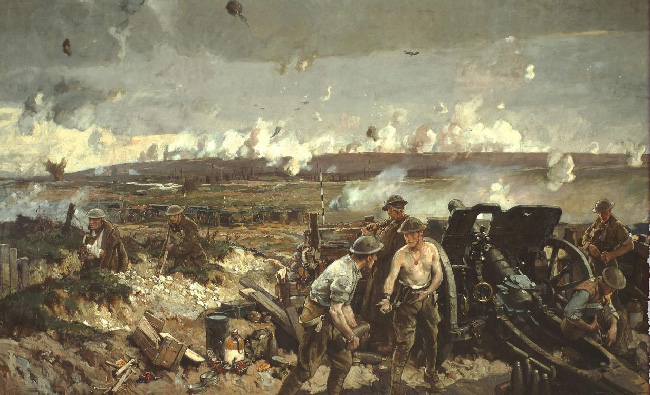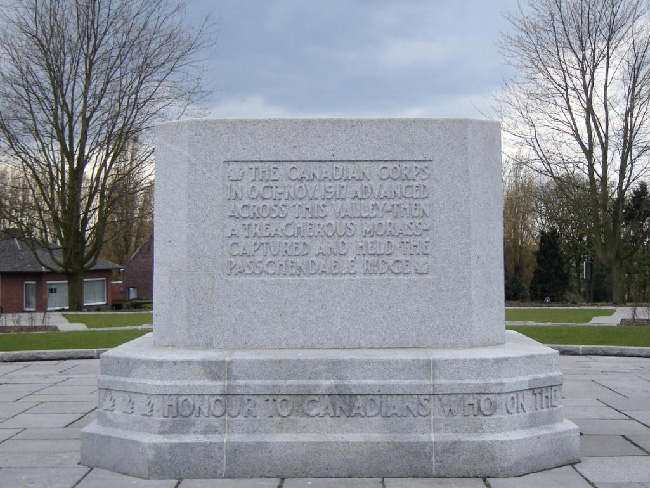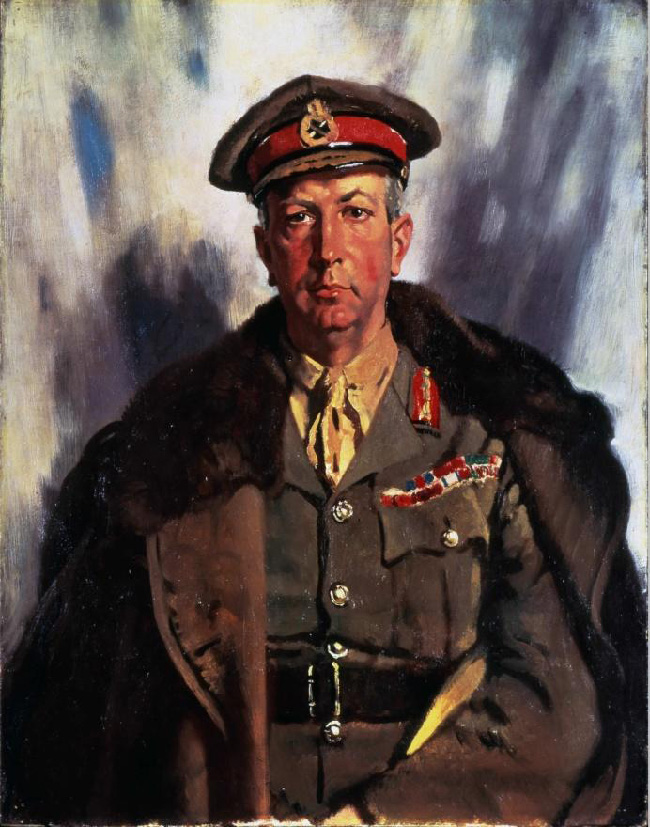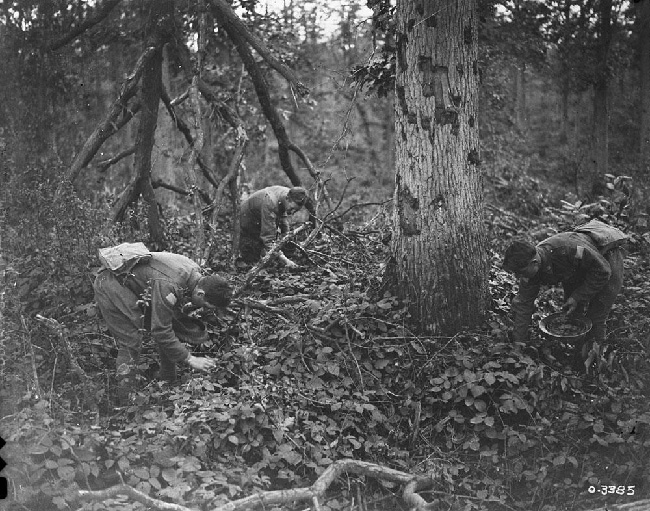George Hilton Soles, DCM and the Canadian Corps, 1917-1918
George Hilton Soles, DCM
Michael Patience, for the Seaforth Highlanders of Canada Regimental Association
In one sense George Hilton Soles was not unlike the 630,000 other Canadians who, compelled by loyalty towards Great Britain and antipathy towards Germany, volunteered for military service during the First World War.
But George Soles' military career was far from ordinary. As an infantryman of Vancouver's 72nd Battalion, The Seaforth Highlanders of Canada, Soles was three times awarded the Distinguished Conduct Medal (DCM) for 'distinguished conduct in the field' during the Great War. No other Canadian ever repeated this distinction.
Even before war was declared on the 28th of July 1914 between the Entente powers (Great Britain, Imperial Russia and France) and the Axis (Wilhelmine Germany and the Austro-Hungarian Empire), George Soles was already a member of the Canadian militia's 107th (East Kootenay) Regiment, which was raised in Fernie in May of 1914.
No doubt eager for action, Soles enlisted in Victoria on the 29th of March 1915 with the 48th Battalion (British Columbia), and shipped out from Halifax with his battalion aboard R.M.S. Grampian for training in Britain on Dominion Day, July 1st that same year.
On January 6th 1916, while still undergoing training in England, Soles' unit was re-designated the 3rd Canadian Pioneer Battalion (48th Canadians), and on March 9th the battalion sailed to Europe for service with the Canadian Corps in Belgium and France as part of 3rd Canadian Division.
Assigned to 3rd Canadian Division, the 3rd Canadian Pioneer Battalion would eventually see combat during the later stages of the British offensive at the Somme, during the end of September and early October 1916 at the Battles of Flers-Courcelette, Thiepval, and le Transloy.
The year of 1917 would prove pivotal not only to the outcome of the Great War, but also for George Soles' role as a combatant. By 1917 it was clear that a greater role for Canadian troops as assaulting 'shock troops' would be needed if the Entente powers were to defeat the armies of Imperial Germany. The year before, in 1916, both the French and British had incurred enormous casualties during the ghastly attritional conflicts at the Verdun and Somme battlefields.
CSM George H Soles' Attestation Paper, signed 29th March 1915 in Victoria
Collar badge, 48th Battalion (British Columbia), CEF
Cap badge, 3rd Pioneer Battalion (48th Canadians)
New York Times headline from April 6th 1917
So it was welcome news when on April 6th 1917 the United States finally declared war against Germany, but it would take time before the vast materiel and manpower advantages offered by that country would affect the outcome of the conflict in western Europe, now in its 4th year.
To return to George Soles, it is known that he was wounded in fighting at Vimy Ridge during early April 1917, but it would have likely come as more of a shock to him convalescing in England to learn that the decision was made on April 17th to break up his 3rd Canadian Pioneer Battalion.
The Battle of Vimy Ridge, by Richard Jack, from the collections of the Canadian War Museum
A controversial decision at the time, the 3rd Canadian Pioneer Battalion was disbanded in order to provide much-needed reinforcements to other Canadian units in the field. Victory at Vimy Ridge, the first time all four Canadian Infantry Divisions of the Canadian Corps were unified under a single command, had come at a considerable cost. The Canadians had suffered a total of 10,602 casualties, 3598 men killed and 7004 wounded.
Meanwhile, the 72nd Battalion, Seaforth Highlanders of Canada had sailed to Britain back in April 1916, and shipped to France in August of the same year. Under the very capable command of Lieutenant-Colonel J.A. Clark, DSO the battalion, assigned to 12th Canadian Infantry Brigade, 4th Canadian Division, was soon making notable contributions to the latter stages of the Somme campaign, and further honed its fighting capabilities during the ultimate battles of Vimy Ridge.
Lieutenant-Colonel John Arthur Clark, DSO was the Commanding Officer of the 72nd Canadian Infantry Battalion, Seaforth Highlanders of Canada for most of its service in the Great War
But the battalion was bloodied. In the words of Bernard McEvoy, writing about the aftermath of Vimy in his History of the 72nd Canadian Infantry Battalion, Seaforth Highlanders of Canada, 'But if the victory had been a great one, it was won at heavy cost, there being but 62 of all ranks who did not become casualties.' On Dominion Day 1917 George Soles was transferred to the 72nd Battalion, Seaforth Highlanders of Canada.
As a member of the 72nd Battalion, Seaforth Highlanders of Canada George Soles fought in some of the most notable battles of the latter stages of the Great War, winning the DCM three times between 1917 and the cessation of hostilities on November 11th, 1918.
CSM George Hilton Soles, 72nd Battalion, Seaforth Highlanders of Canada
In this period of time, with the Canadian Corps at the forefront, the conduct of the war was greatly transformed. Gone were the days of massed infantry assaults against well-prepared German defensive lines heralded by several days of preliminary artillery barrages. Newer tactics aspired to greater battlefield mobility, with an emphasis on combined arms, operational secrecy, and a more effective use of combat engineering.
George Soles' first DCM was awarded for conduct in Belgium during the closing stages of the Second Battle of Passchendaele, in late October and early November 1917. As noted in the London Gazette,
L/Sgt. G.H. SOLES, 430337 'For conspicuous gallantry & devotion to duty. During an attack, when the left flank was held up by some strong posts, he led his men to the right & worked round to within bombing distance. He knocked over a machine gun with a bomb, killing eight of the enemy & taking the remainder, eighteen in number, prisoners' (L.G. 28.3.18)
At the end of October 1917, the 12th Canadian Infantry Brigade was assigned to capture a strongly fortified position, called Crest Farm, which commanded the southern approach to the Passchendaele ridge.
Canadian memorial at Crest Farm, in Zonnebeke, Belgium. The inscription reads: THE CANADIAN CORPS IN OCT.-NOV.1917 ADVANCED ACROSS THIS VALLEY-THEN A TREACHEROUS MORASS-CAPTURED AND HELD THE PASSCHENDAELE RIDGE
At 5:50 A.M. on the 30th of October, the Canadians attacked in miserable conditions. Rain had turned the battlefield into a quagmire. Skilled maneuvering and well-coordinated artillery support allowed the 72nd Battalion to capture Crest Farm by the end of the day.
By the summer of 1918 it was clear to most that Germany was losing the war against the Entente. Despite a massive influx of reserve manpower transferred from the eastern front (Russia had ceased hostilities with Germany after the Bolsheviks seized power and signed the treaty of Brest-Litovsk), Germany's spring 1918 offensives, meant to split the French and British armies, had utterly failed.
German reserves advancing through St Quentin during 'Operation Michael', March 1918
By August the Entente were ready to resume the attack, with the Canadian Corps now in the vanguard of the British First Army. On August 8th the Canadians struck southeast of the ancient French city of Amiens. With no preliminary bombardment to announce an imminent attack, the Canadians swept through the German defenses, ultimately forcing their retreat to the Hindenberg Line.
George Soles' second DCM was earned at the Battle of Amiens in August 1918. The London Gazette notes,
Bar to DCM 'When a Tank which had fallen behind commenced firing upon our men, this NCO immediately put a steel helmet on his bayonet & ran to the Tank through a storm of bullets until he attracted their attention & diverted the fire. His conduct in charge of a platoon throughout the operations was characterised by daring & high fighting qualities' (L.G. 15.11.18)
Canadian General Sir Arthur Currie, DSO inspects captured German artillery. Battle of Amiens, August, 1918. Canada. Dept. of National Defence/Library and Archives Canada/ PA-003046
In the centre the Canadian Corps advanced 13 km, with 4th Canadian Division leading the second phase of the assault. The 'Amiens show' marks the beginning of the 'Hundred Days', the Imperial German Army’s last stand in the west.
Soles' third DCM came at the high-water mark of the Canadian Corps achievements in the Great War, during fierce fighting to breach the Hindenberg Line, the Imperial German Army's last prepared line of defense. Again the Canadians were called for duty at the sharp end. The first Canadian-born Commanding Officer of the Canadian Corps, Lieutenant-General Sir Arthur Currie, DSO faced his greatest challenge of the war. How to cross the Hindenberg Line, a well- fortified German defensive zone which included a dry canal bed 30 meters wide?
Portrait of Sir Arthur Currie , DSO by British war artist William Orpen, 1919
Currie ordered the Canadian Corps to breach the Canal du Nord on a dangerously small front opposite the French village of Inchy. Engineering battalions were ordered to build bridges for men and materiel to quickly cross over. This would make it possible for artillery units to advance with the attacking infantry.
Canadian Combat Engineers building a bridge across the Canal du Nord, September 1918
12th Canadian Infantry Brigade, including the 72nd Battalion, was ordered to assist the capture Bourlon Wood, a heavily forested prominence midway between the Canal du Nord and the French city of Cambrai.
Bourlon Wood was key to the Canadian Corp's primary objective of capturing Cambrai and its vital railway networks. If the Germans were forced from Bourlon Wood, then their position along the Hindenberg Line would be untenable. The two German armies in Flanders to the north would be compelled to withdraw to the next significant line of defense, the Meuse River in neighbouring Belgium. Germany would be out of the war.
The attack against the Canal du Nord and Bourlon Wood came on September 27th. Here counter-battery fire was exceedingly effective. Some 230 German guns were located in the vicinity of Bourlon Wood prior to the Canadian assault, and 80 percent were located and destroyed in the early stages of 4th Canadian Division's successful attack.
Company Sgt. Maj George Soles earned his third DCM on the 29th of September, 1918 leading his ‘A’ Company of the 72nd Battalion as it fought to secure the French hamlet of Sancourt, slightly northeast of Bourlon Wood. As noted in the London Gazette,
2nd Bar (72nd Bn.) 'For marked courage & good leadership during the operations near Cambrai from 27th September to 1st October 1918. On 29th Sept. he rushed an enemy strong-point single-handed, accounting for the garrison & capturing three machine guns. Later, he worked his way along a railway cutting, & personally shot eight of the enemy. Later, again, he organised a strong-point, which successfully held up an enemy counter-attack' (L.G. 10.1.20)
Canadians blackberrying in Bourlon Wood after capturing it. Visible shrapnel damage to trees, October, 1918. Canada. Dept. of National Defence/Library and Archives Canada/PA-003275
Five weeks later, at 5.00 A.M. Paris time on November 11th the Armistice of Compiègne was signed. The German Kaiser, Wilhelm II, had abdicated the day before. At 11.00 A.M. on the 11th the guns drew silent along the western front. For the Canadian Corps, including the 72nd Battalion resting in billets in the vicinity of Valenciennes about 15 km from the Belgian border, and George Soles recovering in hospital from wounds incurred while earning his third DCM, the Great War was over.
In the summer of 1919 the 72nd Battalion, Seaforth Highlanders of Canada and George Soles returned to Canada aboard the SS Olympia. In the 1920's Soles' service to his country and province would continue. Between 1922 and 1928 Soles served as a constable with the office of the Provincial Game Warden. In its 1923 annual report, Soles is recorded working in the North-East Kootenay District, that same Columbia River country where he went to school before enlisting in 1915. From 1928 until his retirement in October 1943 Soles then served as a constable with the British Columbia Provincial Police.
Until its dissolution in 1950 and replacement by the RCMP, the British Columbia Provincial Police was the only law enforcement agent across the entire province. In addition to its policing work, the British Columbia Provincial Police also functioned as provincial government agents. In this role their far-flung tasks were more as returning officers, tax collectors, and census-takers than as police.
In the 1930s, being a representative of the provincial government in BC's distant northern communities, like Prince Rupert and Prince George where Soles was stationed, was a physically challenging occupation made even more arduous by vast distances and the environment. It was an era when travel to remote settlements in the middle of winter to investigate a suspicious death might still best be made in snowshoes. Such conditions would have been business-as-usual for the Great War veteran George Soles, who passed away in Vancouver on July 26th, 1945 as another world war was drawing to a close.
CSM George H Soles' DCM with two bars is the left-most medal, with the blue and red ribbon.
In 2014 George Soles' DCM with 2 Bars was bestowed by his family for keeping with the Seaforth Highlanders of Canada.
Epilogue
Captured Mörser 16, a 21cm German heavy howitzer captured by the 72nd Battalion, Seaforth Highlanders of Canada at the entrance to Stanley Park. The Vancouver Rowing Club is visible in the background.
City of Vancouver Archives CVA 258-26, who erroneously caption the photo: 'German Howitzer captured by the 78th Battalion C[anadian]. E[xpeditionary]. F[orce]. At entrance (Georgia Street) to Stanley Park.'
The dedication on the howitzer reads: 'This twenty-one centimeter German howitzer is one of the two such guns captured by the 72nd Battalion, Seaforth Highlanders of Canada during the operations in France of November 1st to November 4th, 1918. These operations resulted in the passage of the Canal de l'Escaut and the taking of the City of Valenciennes and several smaller towns. The forward movement initiated by this attack never slackened for one moment until Mons was captured and the Armistice declared on November 11th, 1918.'
















